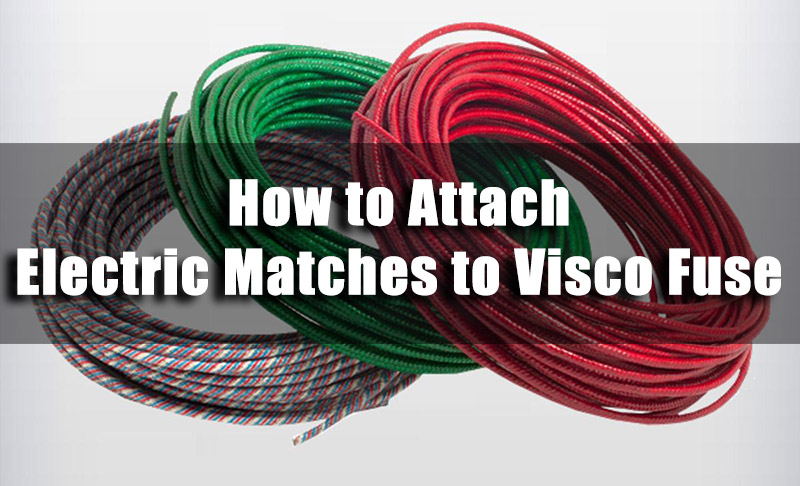The Science Behind Your Favorite Fireworks
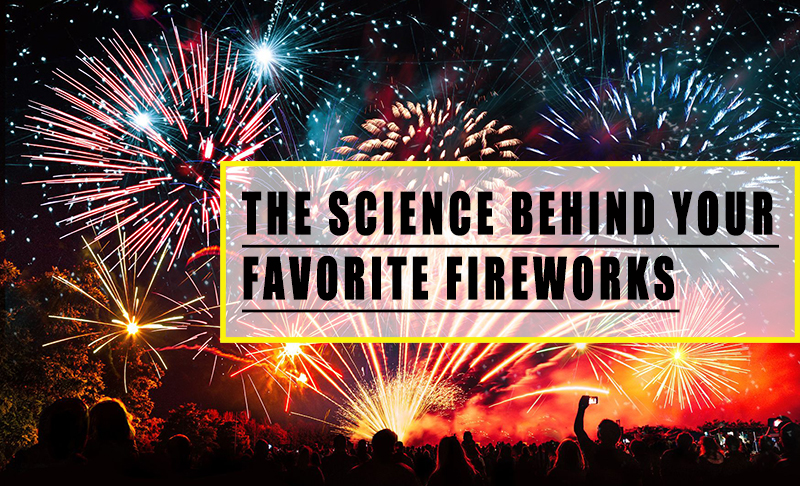
It takes a lot to create the extraordinary displays we enjoy on the 4th of July. Sometimes, the staging alone can take hours of planning for a few minutes worth of display—it takes even longer when a show is set to music. And fireworks aren’t cheap.
The July Fourth Boston Pops Fireworks Spectacular costs in excess of $2.5 million. Shorter, simpler shows like what you’d find in a small town can run between $2,000 and $7,000. The use of larger shells bursting in synchronization with music can cost around $2,000 a minute, putting a 20-minute display at $40,000.
The science behind fireworks is just as fascinating as their cost. Ever wonder just how they make so many colorful shapes during an Independence Day firework display? Wonder no more.
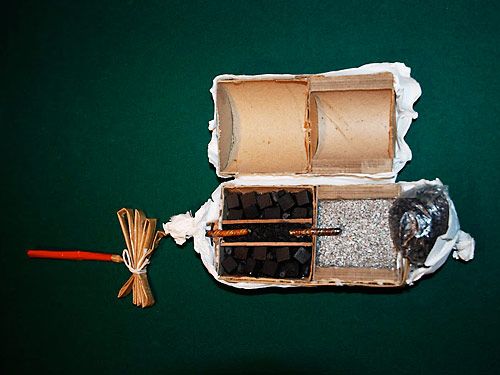
Inside a Shell
Here is a 6-inch cylindrical shell. The time delay fuse is at the far left; square stars are in the left compartments; and the bursting charge extends through from the fuse to the black lift powder at right.
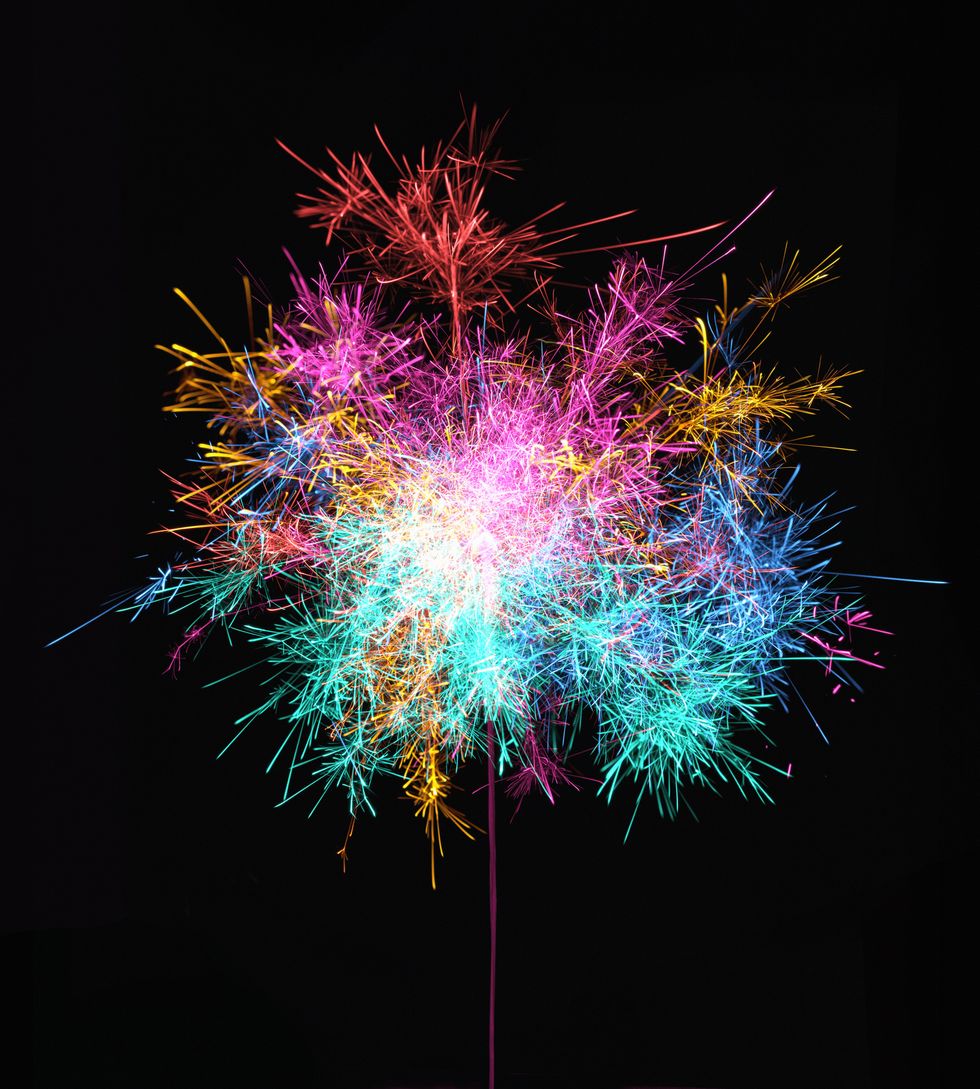
If fireworks were strictly gunpowder, there’d be no excitement, really. They’d all just be balls of fire in the air.
Salts and other metal compounds allow a firework to detonate in bursts of bright blue or rich red. To make red, fireworks contain strontium salts and/or lithium salts, with the strontium producing a brighter red reaction. Calcium salts make orange, while sodium salts (as in table salt) explode in yellow. Green comes from the compound barium chloride, blue from copper chloride.
Silver or white colors are made of aluminum or magnesium. If you want purple, you have to work a little harder: Combine strontium salts for red and copper chloride for blue to create a purple explosion.
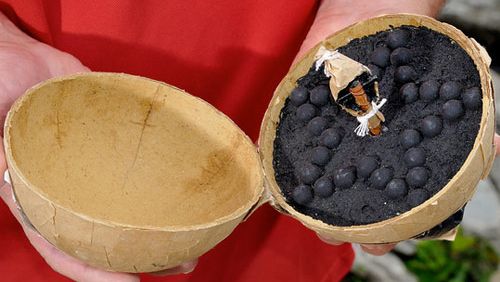
These star patterns are basically the prenatal image of a star-shaped firework. Each half of the shell will contain identical parts and when both halves are joined, the sides mirror each other.
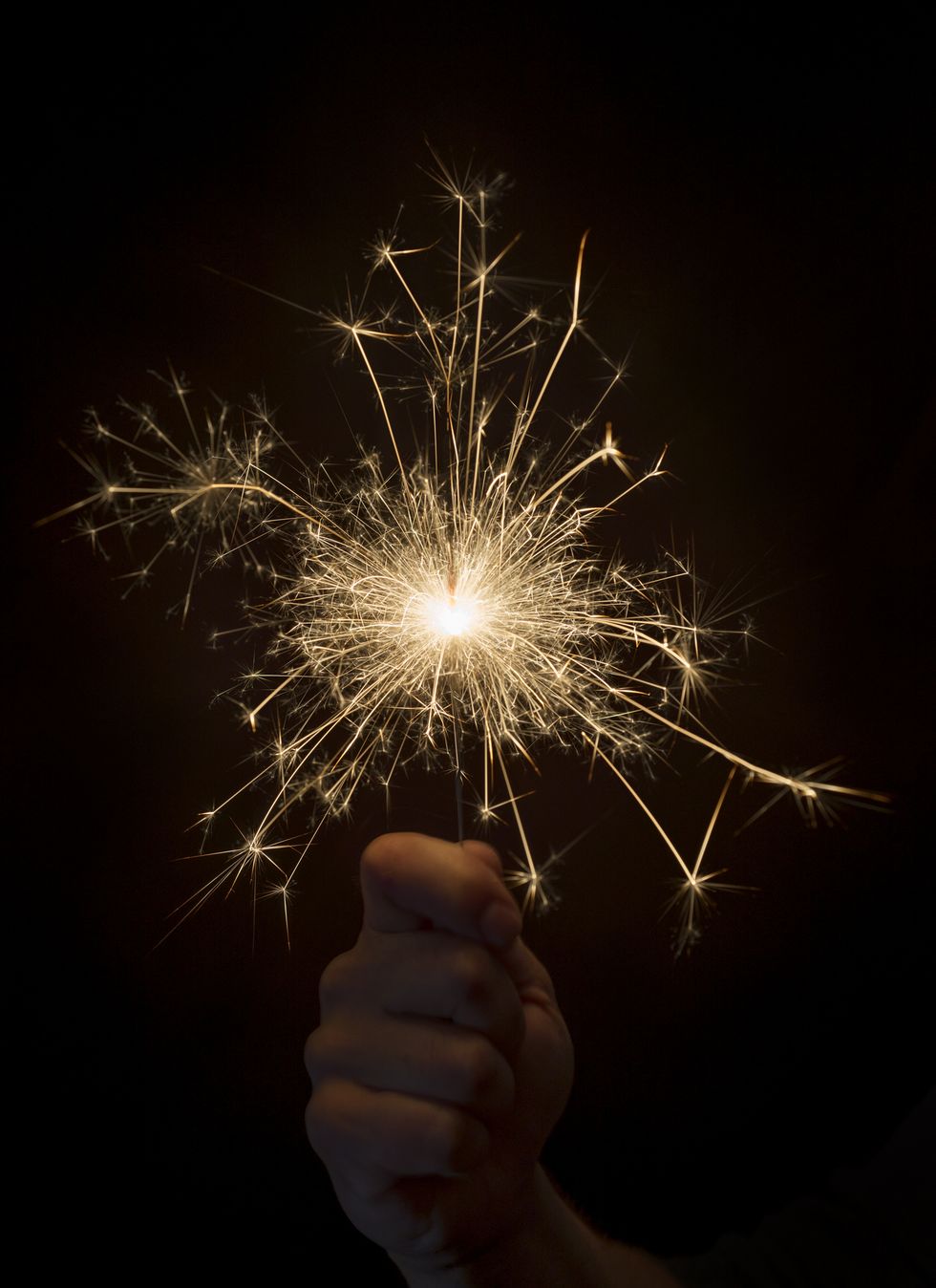
Sparklers
Because sparklers are governed under the same laws as fireworks, we’ll include them even though they’re technically considered novelties.
Sparklers consist of several compounds that when mixed, create a slurry into which the body of the sparkler is dipped. This coating is what burns and produces the bright light that sparklers emit. The fuel and oxidizer are added in specific proportions so that the sparkler doesn’t explode like a traditional firework, but instead burns much more slowly (and safely).
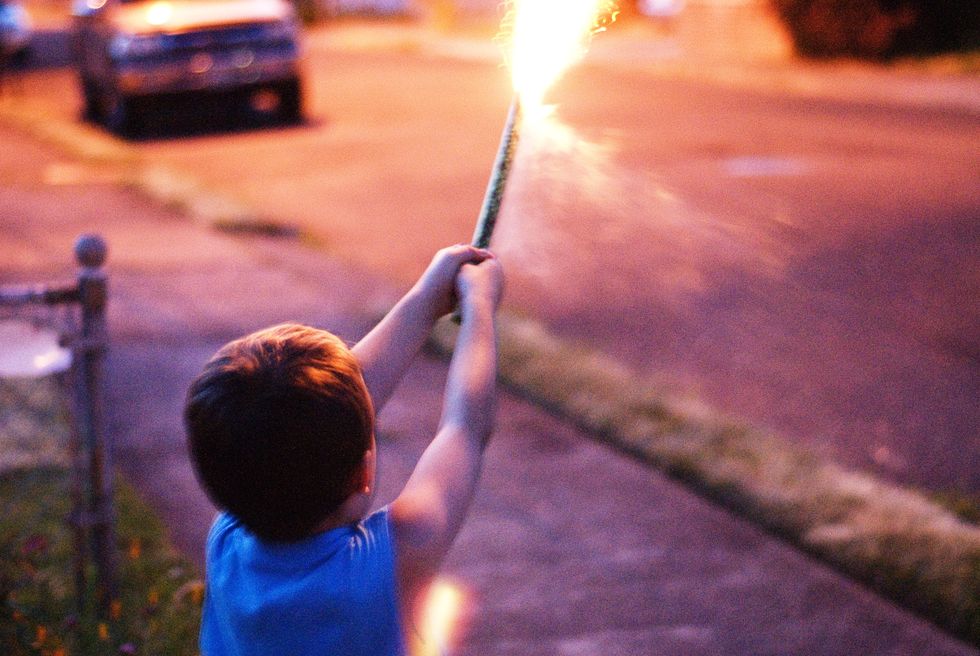
The first thing you should know about Roman Candles is that, contrary to popular belief, they’re not meant to be held in your hand.
Roman Candles are banned in some places because people tend to use them the wrong way. In Delaware, it’s illegal to have them at all and in Wisconsin, you have to have a permit to purchase and use Roman Candles.
The candles are essentially cardboard tubes in wrapping paper. A lit fuse makes its way to a lifting charge that builds pressure and pushes the stars out, setting them off. Roman Candles usually feature a couple of stars within the tube separated by a delay (or powder) charge that spaces the explosions out.
To ensure that the flame doesn’t reach the next star before all of the powder has been burned away, the powder gets tightly packed. This helps avoid misfirings.
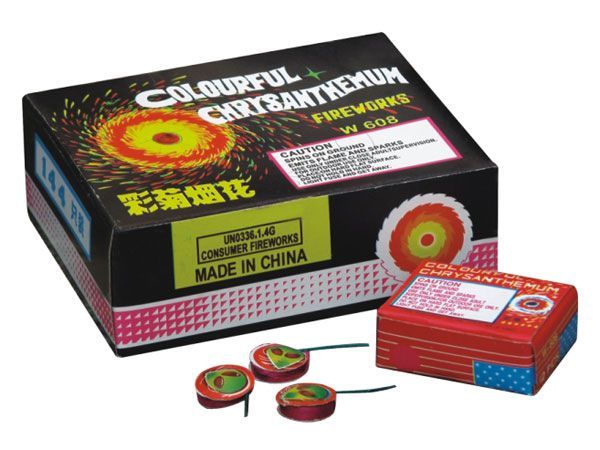
Inside a ground spinner there’s a tapered tube with clay on either end, and a series of propellants inside to give the firework a variety of colors. When the fuse is lit, it ignites the first of the propellants. The gas from the reactions escapes out the small hole where the fuse once went into the firework, which propels the firework along its center axis.
The tube spins because it’s off-balance—the weight not being evenly distributed throughout—causing it to jump around.
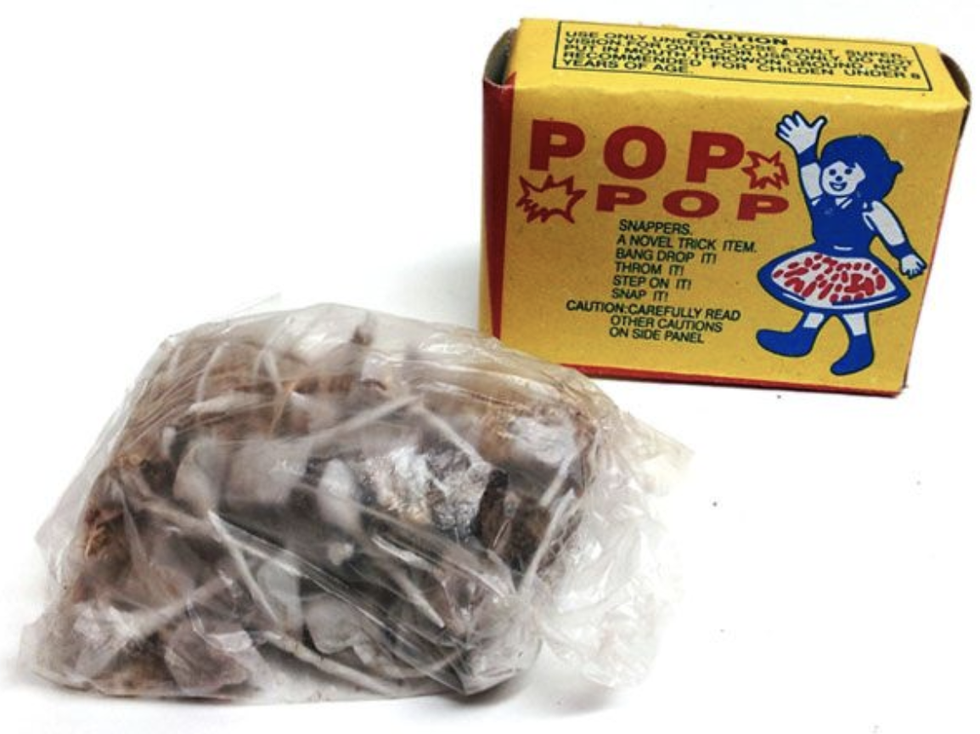
These little balls of paper are so harmless, they’re legal year-round. But what’s going on under there?
Silver fulminate is an incredibly reactive explosive. The slightest impact or heat sets it off. Because of that instability, it’s rarely used as a commercial explosive compound. You don’t want to set off a stick of dynamite by bumping it the wrong way. There is one use for it, though.
You’ll find about 80 micrograms of silver fulminate in every snap ‘n’ pop, along with a bunch of tiny bits of gravel. The gravel gives the silver fulminate the friction it needs to ignite.
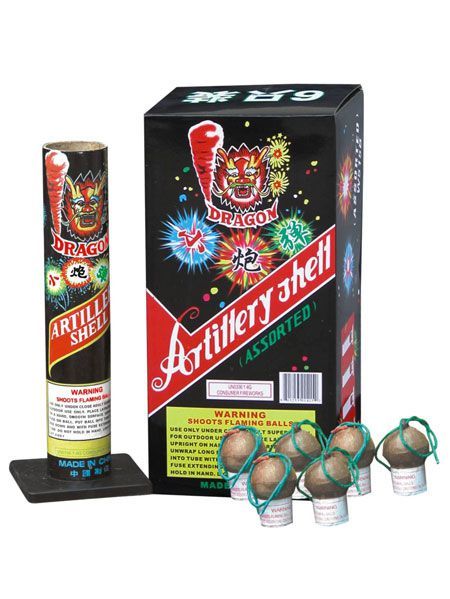
These are the real crowd-pleasers: those balls that are placed into a mortar tube and shot into the air, creating a dazzling sight with a delayed effect. The artillery shells are filled with gunpowder in two tiers. When the fuse burns down to the bottom, it lights a bit of gunpowder—also known as the lift charge—that shoots the shell into the air.
While the shell flies through the air, a time fuse is burning. This burns slowly up into the upper chamber of the shell until it reaches the second supply of gunpowder, called the burst charge.
This burst charge ignites a series of stars. The shell is packed with these stars, which create the colorful arrangements seen in the sky.
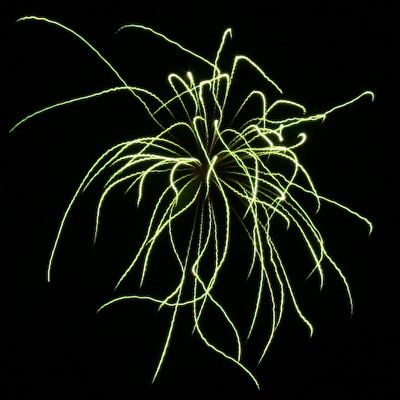
Whoever produced these stars has mastered the barium chlorate concoction that gives fireworks the toxic-green sheen of Ghostbusters‘ Slimer. The green bee trajectories are the random product of stars packed into small tubes (3 inches long x ½ inch diameter) within a spherical shell. As the heat increases, the pressure in the tube sends the stars zipping out haphazardly.
“To have a star composition in these tubes is almost like having rocket powder,” says Jim Souza of Pyro Spectaculars in Rialto, California.
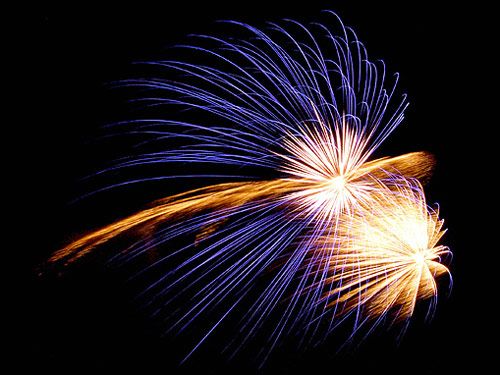
Pyrotechnicians agree that the blue-violet shades of this peacock feather are the most challenging to formulate. The concentrations of chemicals used to make vivid violet blues are unstable and extremely dangerous. In this case, copper oxide and strontium carbonate get the job done. Gold pellets are placed circumferentially at the shell’s equator to create a golden Saturn ring.
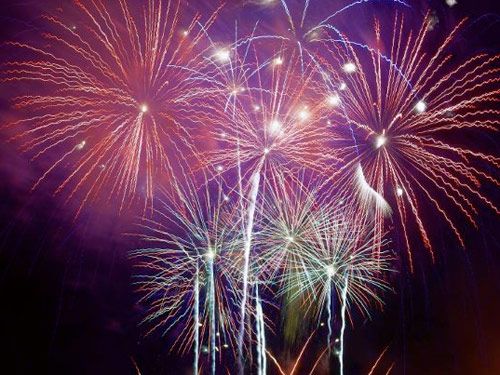
The Zambelli rainbow chrysanthemums at mid-level were created with assorted colored stars, which were placed in the shell in areas that replicate the location they take up in space.
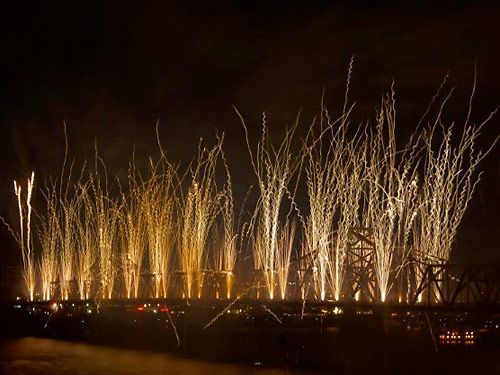
These are called screaming turbo candles, or small cylinders containing pyrotechnic mixtures that create a rising squiggle effect. To make these, Zambelli drills a hole in the tube so that gaseous products can squeeze out upon ignition, screeching all the way. Charcoal is often used to produce golden colors.
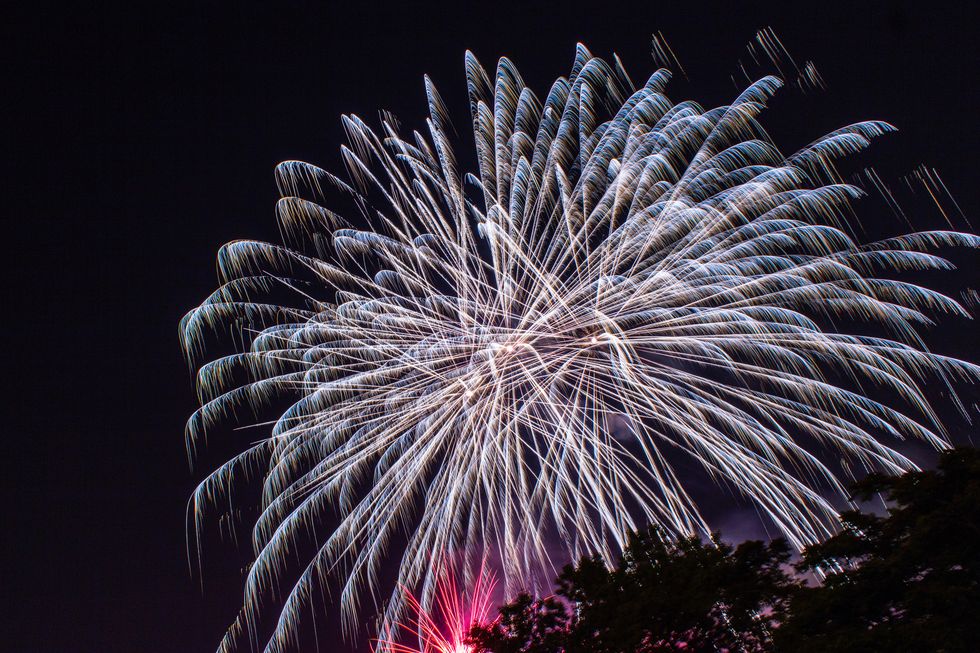
The Willow’s name is self explanatory. Just after bursting into a dazzling display, the firework takes on the appearance of a weeping willow with it’s drooping arms curving downwards.
Willows are similar to Peonies and Chrysanthemums.
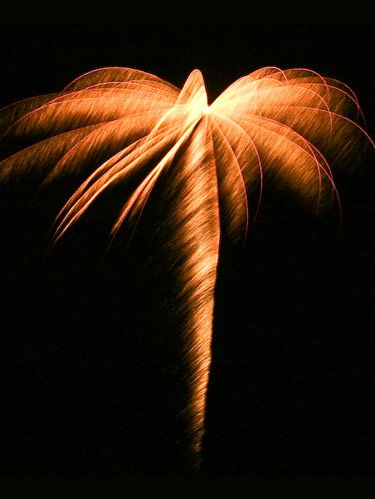
The soft golden brushstrokes of this tropical display arise from large pressed pellets called comet stars, which resemble Energizer C-batteries, Souza says. Comet stars have much more material and burn for a longer duration of time, creating broad strokes.
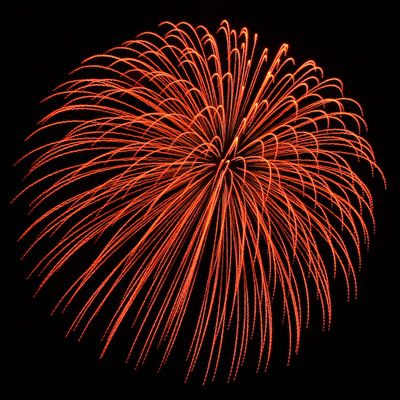
This orange peony firework is one of the simpler designs, with each peony petal coming from a very small star.
Peonies are the most common type of firework and are usually part of the main act during a show. Peonies are also similar to Chrysanthemums, with the main difference being that Peonies don’t end with a trail of sparks that disappear into the sky.
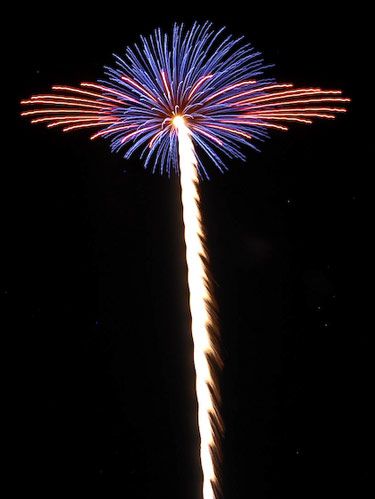
The single tail star has a shorter time delay fuse, causing the star to ignite at the same time as the lift charge at takeoff. Once the shell reaches its zenith, the bursting charge ruptures the shell casing and Saturn emerges.
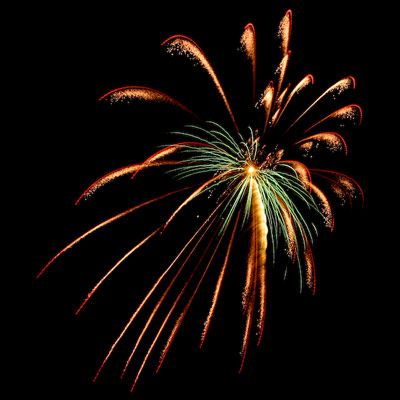
The guts of this firework must be carefully placed into a cylindrical shell about the size of a Quaker Oats canister, Souza says. In the center of the shell are tiny round green stars that burst as a teal peony at the firework’s nucleus.
Larger gold comet stars border the teal pellets and flare out when ignited, eventually peeling off into sharp scarlet quills. The animation can be changed by inserting scarlet stars into special compartments at the outskirts of cylinder.

Each cosmic red tendril and teal plume has a matching pyro pellet within the firework shell. The teal stars are made of a barium nitrate mixture and the red stars are a blend of strontium salts.
source: https://www.popularmechanics.com/technology/g203/how-fireworks-work-photo-gallery/



